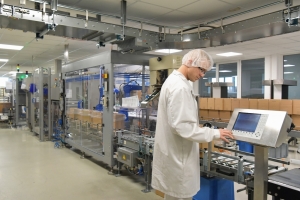Mosaic architecture, once considered an ancient art form, has been reimagined by modern architects to fuse tradition with innovation in contemporary design. Today's architects are pushing the boundaries of mosaics, integrating them into cutting-edge structures that redefine the aesthetics of urban spaces. By leveraging diverse materials, advanced technology, and creative composition, architect company professionals are transforming mosaic architecture in ways that were once unimaginable.
Innovative Use of Materials in Mosaic Architecture
Contemporary mosaic architects are moving beyond traditional ceramic and glass tiles to incorporate a wide range of innovative materials. These include:
- Recycled Materials: Sustainable design has given rise to the use of repurposed glass, stone, and metal, allowing mosaics to contribute to eco-friendly architecture.
- Smart Tiles: Technology has enabled the development of interactive mosaics using LED tiles that change color and display dynamic images based on environmental factors.
- Organic Elements: Wood, shells, and even living plants are being integrated into mosaic patterns, creating visually stunning and sustainable designs.
By expanding the material palette, architects are pushing the creative potential of mosaics and making them a defining feature of contemporary design.
Blending Tradition with Modernity
Modern mosaic architects are skilled in merging historical mosaic techniques with cutting-edge contemporary aesthetics. Many designs pay homage to classic mosaic patterns from Roman, Byzantine, and Islamic art while adapting them to modern architectural principles.
- Reviving Ancient Techniques: Artisans are preserving age-old methods while applying them to futuristic structures.
- Minimalist Mosaic Designs: Contemporary designers are embracing simplified, geometric mosaics that align with the minimalist trends of modern architecture.
- Public Art Integration: Cities around the world are incorporating mosaic murals and facades into public spaces, transforming urban environments into vibrant works of art.
This balance between tradition and innovation ensures that mosaic architecture remains both timeless and progressive.
The Role of Technology in Mosaic Architecture
Advancements in digital tools and fabrication methods have revolutionized the way mosaics are designed and implemented. Architects now have access to:
- 3D Modeling Software: Programs like Rhino and AutoCAD allow designers to experiment with complex mosaic patterns before physical execution.
- Laser Cutting & CNC Machines: These technologies enable precise cutting of intricate mosaic pieces, reducing labor and material waste.
- Augmented Reality (AR) & Virtual Reality (VR): AR and VR tools help architects visualize how mosaic designs will appear in real-world settings before installation.
These innovations have made mosaic architecture more efficient, versatile, and accessible for large-scale projects.
Mosaics in Sustainable Architecture
Sustainability is a core principle of contemporary design, and mosaic architecture is playing a key role in this movement. Architects are integrating mosaics into sustainable buildings in several ways:
- Energy-Efficient Facades: Mosaics made of reflective materials help regulate temperature and reduce the need for artificial cooling.
- Rainwater-Absorbing Surfaces: Porous mosaic materials can be used in eco-friendly urban planning to improve drainage and reduce flooding.
- Solar-Powered Mosaics: Some projects are integrating solar panels into mosaic surfaces, blending sustainability with aesthetic appeal.
By combining environmental consciousness with artistic expression, modern mosaic architects are redefining how beauty and function coexist in contemporary structures.
Iconic Mosaic Architecture Projects
Several groundbreaking projects showcase the power of mosaics in modern architecture. Some of the most notable examples include:
- Casa Batlló, Spain: Antoni Gaudí's masterpiece features intricate mosaics that create a fluid, nature-inspired facade.
- Park Güell, Spain: Another Gaudí creation, this public park uses colorful mosaics to blend architecture with organic landscapes.
- The Sheikh Zayed Grand Mosque, UAE: This architectural marvel incorporates luxurious mosaic patterns throughout its interiors and exteriors.
- Philadelphia's Magic Gardens, USA: A contemporary urban mosaic project that transforms an entire city space into a vibrant artistic experience.
These projects highlight the versatility and cultural significance of mosaics in modern architectural landscapes.
The Future of Mosaic Architecture
As architectural trends continue to evolve, mosaic design is expected to play an even greater role in shaping the built environment. Future developments may include:
- Smart Mosaics with AI Integration: Interactive mosaics that respond to movement and weather conditions.
- Biophilic Mosaic Designs: Increased use of natural elements and living mosaics that promote biodiversity in urban settings.
- Personalized Mosaic Interiors: Custom-designed mosaic walls, floors, and ceilings tailored to individual tastes through digital fabrication.
With endless creative possibilities, mosaic architects will continue to push boundaries and redefine contemporary design.
Conclusion
Modern mosaic architects are revolutionizing contemporary design by merging artistic heritage with cutting-edge technology. Through innovative materials, sustainable practices, and digital advancements, they are proving that mosaics are more than just decorative elements—they are transformative forces in architecture. As cities become more vibrant and design-forward, mosaic architecture will continue to shape the aesthetic and functional evolution of modern spaces.





